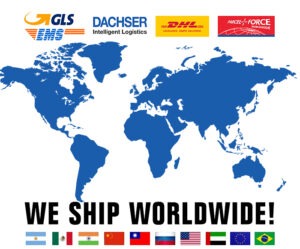
How Much Does A Used Shipping Container Cost? In recent years, the use of used shipping containers has gained remarkable popularity for various purposes. Whether it’s for innovative housing solutions, storage options, or creative business ventures, the affordability and durability of used containers make them an attractive choice. In this article, we’ll delve into the factors influencing the cost of used shipping containers, average price ranges, benefits, drawbacks, popular uses, and essential tips for prospective buyers.
The cost of a used shipping container can vary based on several factors, including its condition, size, age, and location. As of my last knowledge update in January 2022, here is a general idea of the price range for used shipping containers:
Standard 20-foot container: $1,500 to $3,000
Standard 40-foot container: $2,000 to $4,500
Factors Affecting Used Shipping Container Costs
When contemplating the cost of a used shipping container, several factors come into play. The age and condition of the container, its size, material, and where you source it all contribute to the final price tag.
Age and Condition
The older the container, the lower the cost tends to be. However, it’s crucial to assess the overall condition. Minor wear and tear may be acceptable, but significant damage could incur additional expenses for repairs.
Size and Dimensions
Shipping containers come in various sizes, and larger containers generally cost more. Consider your intended use and select a size that meets your requirements without unnecessary expenses.
Material and Build Quality
Containers made of higher quality materials or those designed for specialized purposes might be priced higher. Understanding the intended use helps in determining the appropriate material and build.
Supplier and Location
The source of the container and its location also affect pricing. Local suppliers might offer better deals, but exploring different markets could lead to more cost-effective options.
Average Price Ranges
For those curious about the costs, here’s a general overview based on container sizes:
Small Containers
Containers under 20 feet typically range from $1,000 to $2,500, depending on the factors mentioned earlier.
Medium-sized Containers
Containers between 20 and 40 feet can cost between $2,500 and $4,500. Again, specifics vary based on the container’s condition and specifications.
Large Containers

Containers larger than 40 feet may range from $3,500 to $6,000 or more. The size, condition, and intended use play significant roles in determining the final cost.
Benefits of Buying Used
Choosing a used shipping container over a new one brings several advantages.
Cost-effectiveness
One of the primary attractions is the significant cost savings. Used containers provide a budget-friendly option for those seeking functional and sturdy solutions.
Availability
Used containers are readily available in the market. The surplus of shipping containers from global trade ensures a steady supply, contributing to their affordability.
Eco-friendly Option
Opting for a used container aligns with sustainable practices by giving a second life to materials that might otherwise be discarded.
Potential Drawbacks
While there are benefits, it’s essential to acknowledge potential drawbacks.
Wear and Tear
Used containers might exhibit signs of wear and tear. Buyers should carefully inspect and assess whether any necessary repairs fit within their budget.
Limited Customization Options
Compared to new containers, used ones may have limitations in terms of customization. Those with specific requirements should weigh the trade-offs carefully.
Inspection Concerns
Buyers must conduct thorough inspections or enlist the help of professionals to ensure the container meets safety and structural standards.
Popular Uses for Used Shipping Containers

The versatility of used shipping containers extends to various applications.
Home Construction
Used containers serve as the building blocks for innovative and sustainable housing solutions, offering an affordable and eco-friendly alternative.
Storage Solutions
Businesses and individuals utilize these containers for secure and cost-effective storage solutions, addressing space constraints.
Pop-up Shops and Businesses
Entrepreneurs capitalize on the mobility and durability of containers, transforming them into pop-up shops, cafes, or creative business spaces.
Tips for Purchasing a Used Shipping Container
For those considering a purchase, here are some valuable tips:
Inspect Thoroughly
Carefully examine the container for rust, structural damage, or signs of wear. Don’t hesitate to ask for maintenance records.
Verify the Supplier’s Reputation
Choose reputable suppliers with positive reviews. A trustworthy source ensures the container’s authenticity and quality.
Check for Necessary Modifications
If modifications are needed for your intended use, factor in the cost and feasibility before finalizing the purchase.
Case Studies
Explore real-life examples of successful ventures using used shipping containers, offering insights into the diverse possibilities these structures present.
DIY Modifications
Unleash creativity by exploring potential modifications, from interior renovations to exterior enhancements, turning a standard container into a personalized space.
Interior Renovations
Simple modifications like insulation, flooring, and basic amenities can transform the interior for various purposes.
Exterior Enhancements
Adding windows, doors, or external coatings not only improves aesthetics but also enhances functionality.
Sustainability Projects
Containers can be repurposed for sustainable initiatives like gardening, rainwater harvesting, or solar power installations.
Global Market Trends
Stay informed about the current trends in the global used shipping container market.
Emerging Markets
Identify emerging markets where the demand for used containers is on the rise, offering potential investment opportunities.
Influencing Factors
Understand the factors influencing the market, such as economic shifts, advancements in container technology, and sustainability trends.
Future Outlook
Predictions for the future of the used shipping container market involve evolving sustainability initiatives and technological advancements.
Sustainability Initiatives
Increased focus on eco-friendly practices may drive the demand for repurposed shipping containers in various industries.
Technological Advancements
Advancements in container design and technology could lead to more innovative uses and increased market adaptability.
Conclusion
In conclusion, the cost of a used shipping container is influenced by various factors, and understanding these factors helps potential buyers make informed decisions. Whether it’s for a DIY project, business venture, or sustainable housing, the versatility of used containers is undeniable. As you embark on your container journey, weigh the benefits against the drawbacks, explore creative possibilities, and stay updated on market trends for a well-rounded approach.






